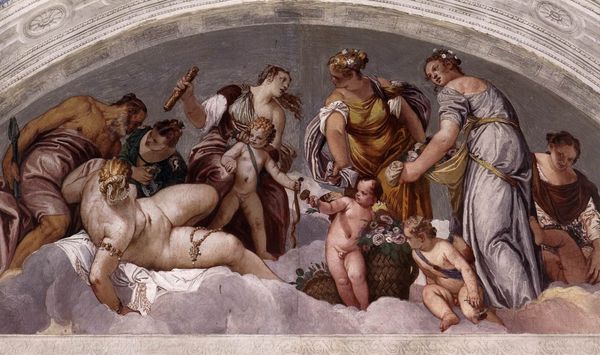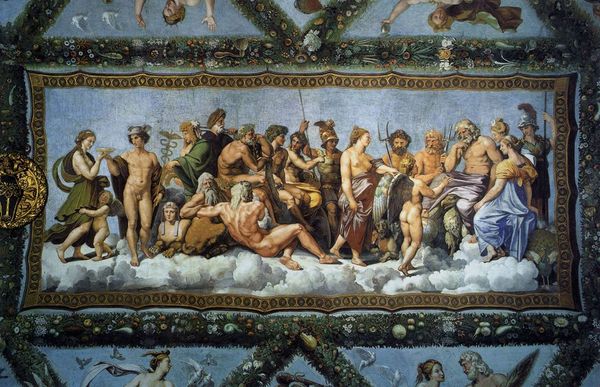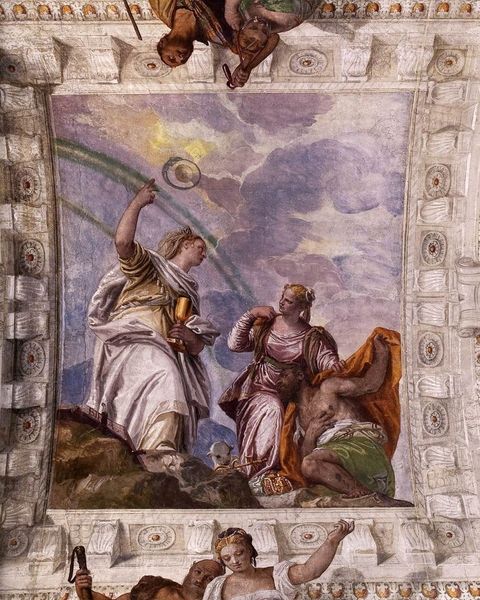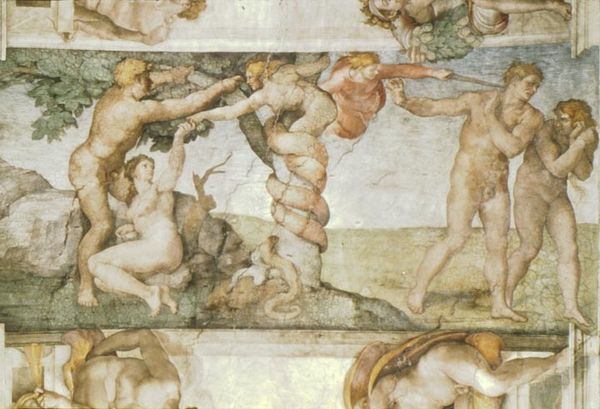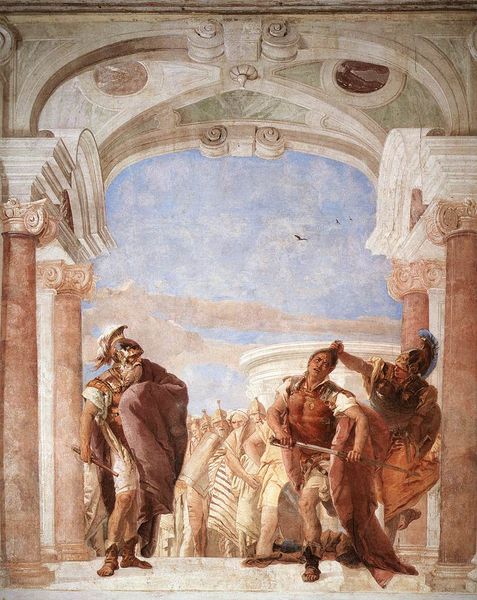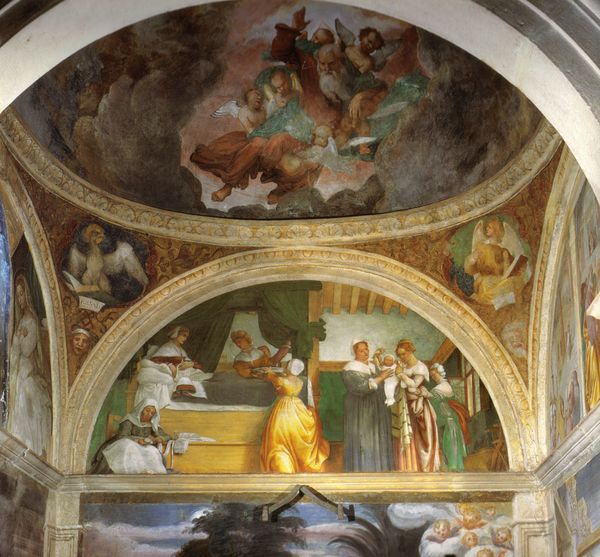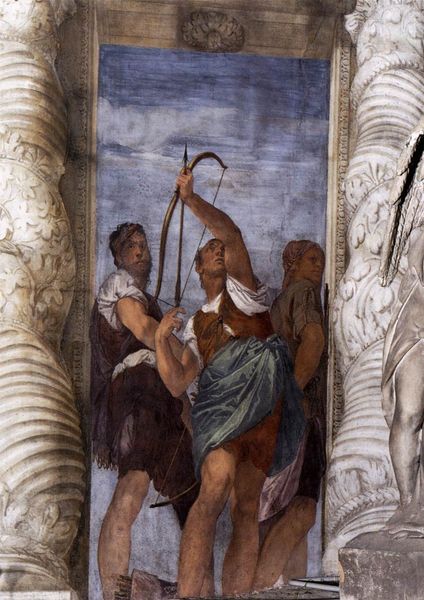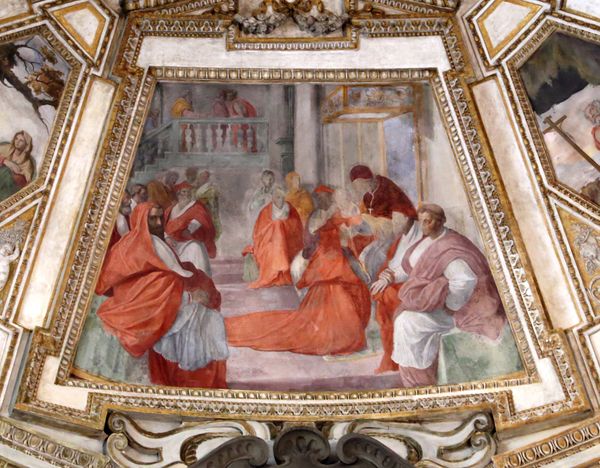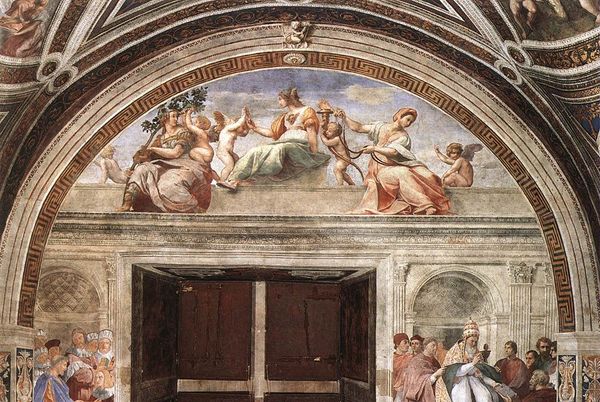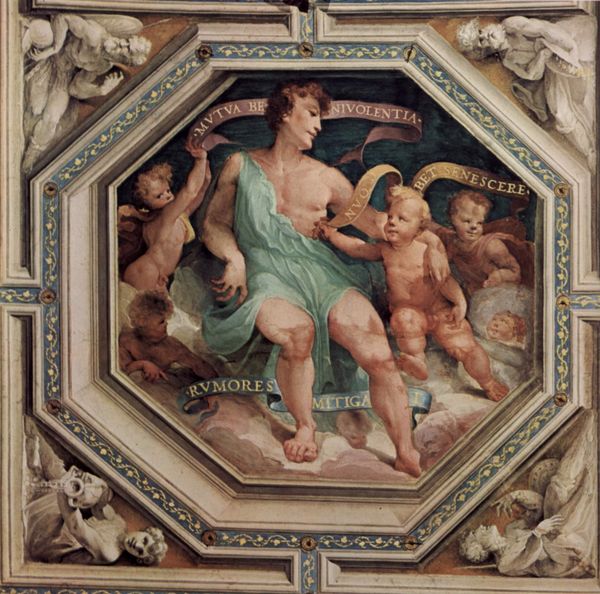
painting, oil-paint
#
venetian-painting
#
allegory
#
painting
#
oil-paint
#
mannerism
#
roman-mythology
#
mythology
#
italian-renaissance
#
nude
Copyright: Public domain
Curator: Looking up, we see Paolo Veronese’s “Fortune,” painted in 1561, executed in oil paint. It is really difficult to grasp as an image in itself. Editor: It has a luminous quality to it. Despite the mythological subject matter, the pale hues lend a delicate, almost melancholic mood, which I don't quite know what to do with. Curator: The piece exists within a larger system of display – the Palazzo Trevisan in Murano. Think about how the building’s architecture shaped not only the dimensions, but also the vantage point. Veronese was forced to account for a viewer standing below when devising its composition. This in turn has clear impact in both technique and production choices. Editor: Right, this wasn't conceived in isolation. Considering its display in a palazzo informs the political project. We know Venice had quite powerful noble families in the 16th century, so did this image celebrate or critique fortune’s capricious nature within that social context? I suppose the symbolism might hold some clues. Curator: Well, there’s a cow there. And Fortune, if that's who this central nude is, holds a sail which suggests she’s controlled by the winds of chance. Her foot rests on what looks like coins, so Veronese definitely works with materiality here. Think also about who produced this canvas, or how and where Veronese found his pigments. Editor: That brings us to the Roman mythological elements – this wasn’t just art for art's sake. By referencing classical figures, the artwork engages with long standing notions of power, chance, and destiny, concepts thoroughly relevant to a patrician family navigating Venetian society. I wonder, were viewers meant to feel empowered by an understanding of fortune, or was there a cautionary message at play? The painting may have offered insight or strategies to mitigate risk in public life. Curator: Those all sound possible when you consider the market forces surrounding it at the time and today, especially the ways those influence art historical thinking. Editor: Thinking about how the elites used mythological allegories makes me look at it anew. Thanks. Curator: Absolutely. The next time you happen to visit, I hope you bring new understanding about how it all comes together.
Comments
No comments
Be the first to comment and join the conversation on the ultimate creative platform.
